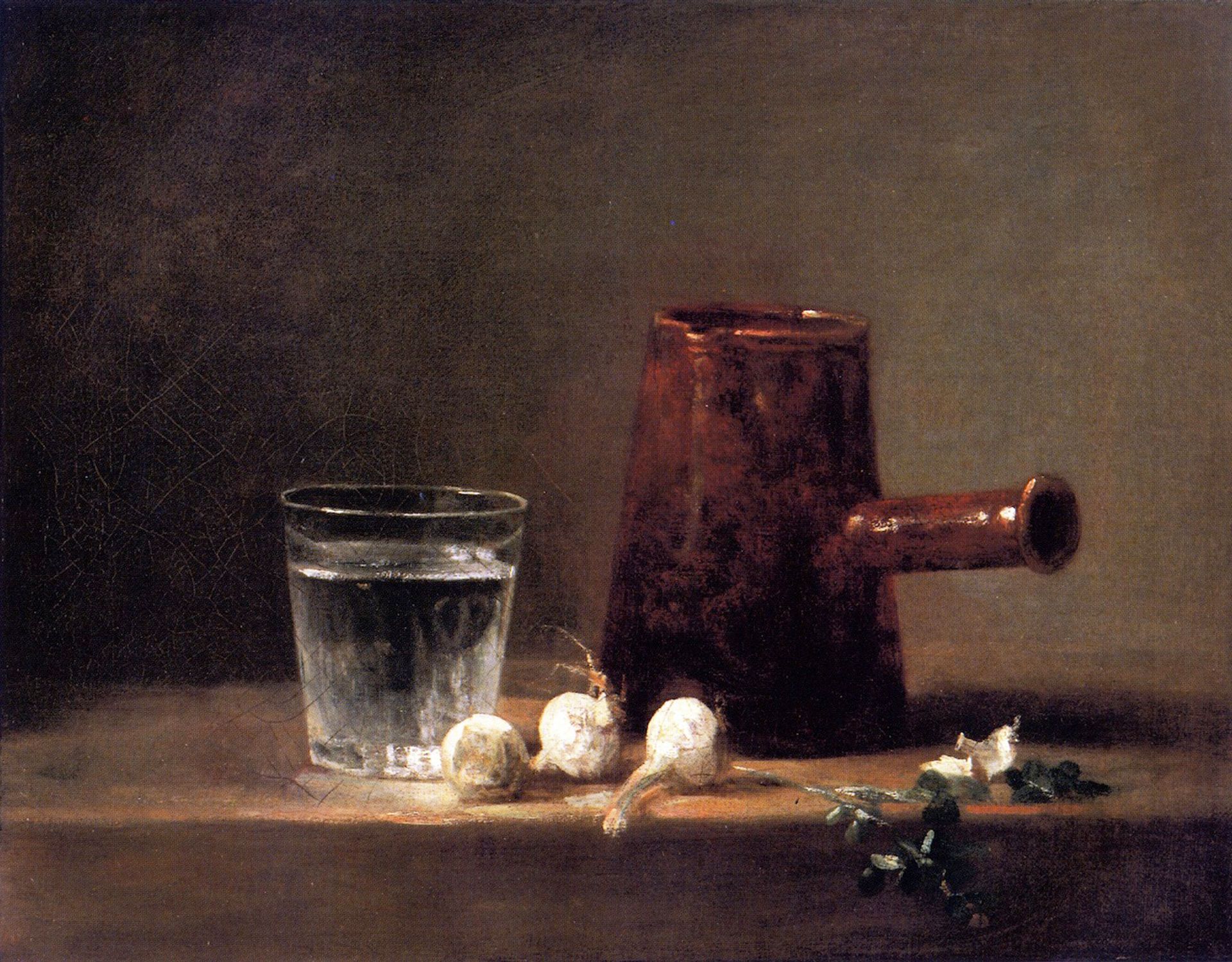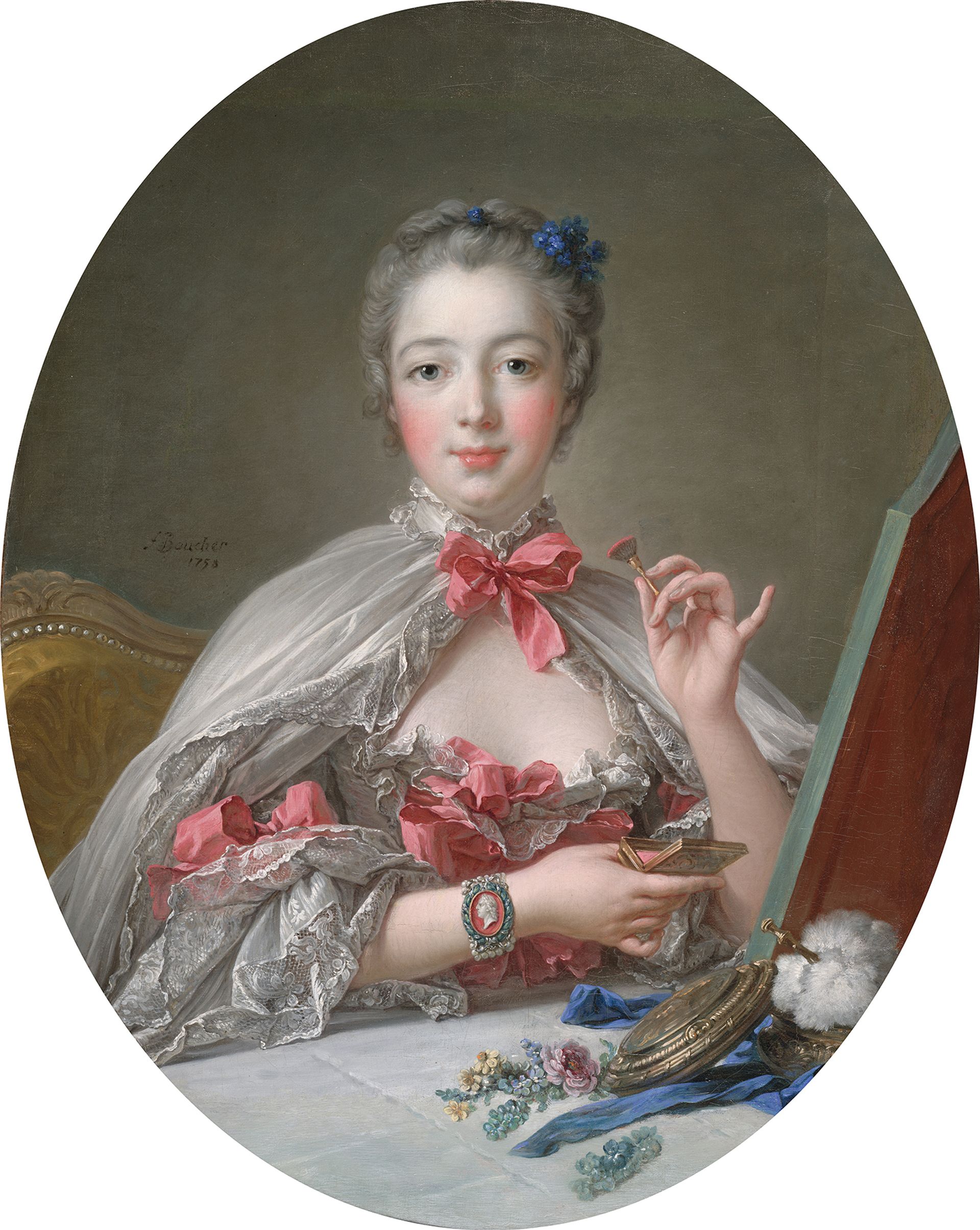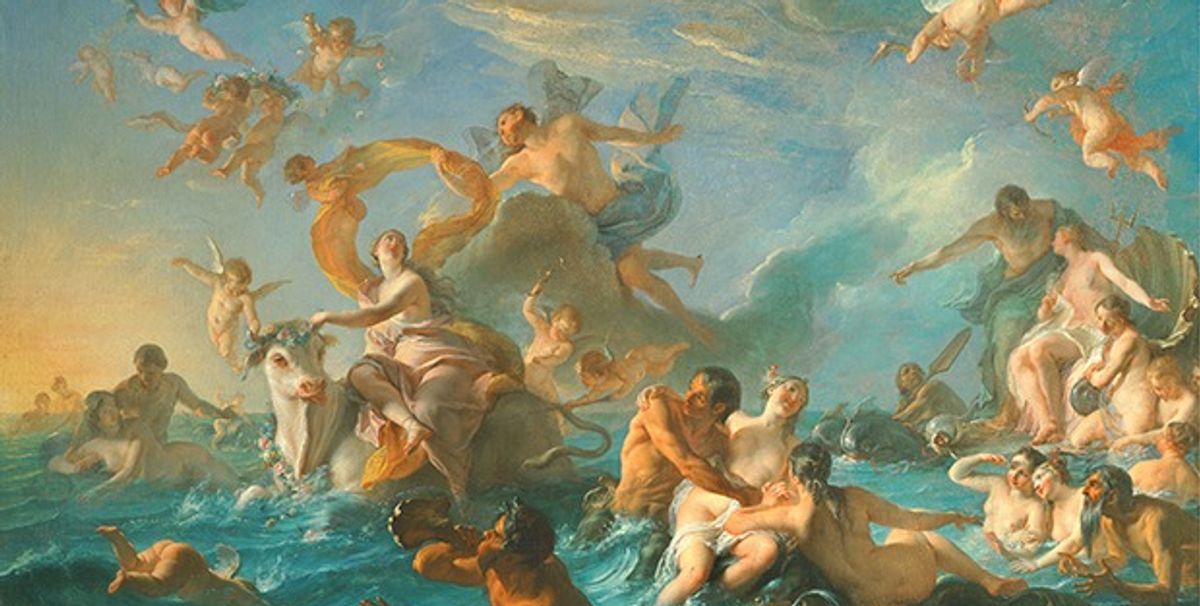In May, the National Gallery of Art in Washington, DC, opened the exhibition America Collects 18th-Century French Painting (until 20 August). The show, which includes 68 pictures, looks at the cross-Atlantic fashion for diverse styles of French painting, including works by artists as unalike as the Rococo painter Antoine Watteau and the Neo-classicist Jacques-Louis David. In this excerpt from the catalogue, which is available through the museum, the show's curator, Yuriko Jackall, outlines how the French brothers Edmond and Jules de Goncourt sparked a taste for the Rococo in America.

“I do not feel an interest in any pencil but that of [Jacques-Louis] David.” —Thomas Jefferson
“Do not buy the most beautiful in the world, but build around you a world of beauty.” —René Gimpel
Reasons for collecting differ vastly; so do the objects that are desired. Eighteenth-century French painting has maintained a more or less constant presence in America since Thomas Jefferson wrote home in 1787 about seeing The Death of Socrates (1787) by David (“a superb one it is”), the Antiquities of France series by Hubert Robert (“among the foremost”), and assorted portraits by Élisabeth Vigée Le Brun (“much approved”) at the public salon exhibition. Nearly 30 years later, Joseph Bonaparte, elder brother of Napoleon, arrived on American shores bearing 18th-century French paintings of the finest quality—and when he finally returned home in 1839, he left Noël Nicolas Coypel’s The Abduction of Europa (1726-27) as a parting gift to his friend General Thomas Cadwalader. Perhaps Bonaparte’s solemn addendum to his otherwise affectionate farewell letter (“P.S. The Rape of Europa is one of the best paintings by Coypel, of the French school of the last century”) belies a certain unease concerning his American friend’s ability to recognise valuable art. It also suggests a benevolent awareness of the possibilities of reinterpretation, misunderstanding and attribution of new meaning that inevitably affect French cultural icons set loose in the New World.
American connoisseurship has grown in leaps and bounds since the early 19th century. Yet, as Bonaparte might have predicted, in this country of 50 diverse and geographically separate states, the reasons and motivations underlying American taste for 18th-century French painting have become as varied as the art itself. In 1897, the aristocratic aesthete Robert de Montesquiou-Fezenac, sometime literary model for Marcel Proust and Joris-Karl Huysmans, deemed the Rococo style “capricious.” This adjective could just as easily apply to the entire century, shifting as it does between a curving decorative aesthetic and a sober, clean one, between the playful and visually brilliant and the intentionally edifying and morally uplifting. In short, interested American viewers may find as many 18th-century Frances as they wish within the French 18th century. Each grouping of paintings in this exhibition proposes a different facet or vision of the period. Taken as a whole, they capture some sense of its variety and innate contradiction.
If Americans conjured up multiple visions of 18th-century France, this essay attempts to account for what they might have come looking for in the first place. Some may have sought out the souvenir with its commemorative power, others the immersive possibilities of the decorative, still others the campiness of the masquerade. These approaches to collecting have perhaps provided continuity, even as the object of desire has changed, again and again.
The Brothers Goncourt
Not long after Jefferson praised David’s clean lines and sober aesthetic, his compatriots at home embraced a different vision of 18th-century France: a sumptuous place made up of gilding and porcelain, finely woven tapestries and paintings in sparkling shades of lemon yellow, delicate greens and blues and vibrant pinks. This France existed under the sign of the Rococo, the style of decoration and painting that privileged asymmetry and sinuosity. Stylish and conspicuously material, this imagined nation was dominated interchangeably by a trio of impossibly elegant and fashionable celebrities, all queens or very nearly so. There was Marie-Antoinette whose poignant yearning for normalcy in the midst of the constraints of court life resulted in a fantasy dairy equipped with milk pails manufactured in Sèvres porcelain. There was the vivacious, extravagant Mme du Barry who rose from humble origins to catch Louis XV’s roving eye. And there was the refined marquise de Pompadour, the most prominent favorite of Louis XV, whose discernment ensured her place as “godmother and queen of the Rococo.”
The authors of this phrase, Edmond de Goncourt (1822–1896) and his younger brother Jules (1830–1870), were journalists, diarists and prolific historians of 18th-century art. In the late 19th century, they were largely responsible for fashioning this seductive vision of a Rococo France. Forged over the course of numerous articles on individual artists, an exhaustive book on 18th-century French art and biographies devoted to each of the aforementioned Rococo queens, their imagined France originated with the death of Louis XIV in 1715 and ended in 1793 with the execution of Marie-Antoinette. Their passionate defense of the artists of this period, coupled with an equally firm rejection of the Davidian aesthetic, helped to revive the flagging reputations of the poetic Antoine Watteau and the sensual François Boucher for Frenchmen and Americans alike.
The France of the Goncourts was, of course, a lost world, and it was also largely a fantasy one. The children of a bourgeois army officer and an aristocratic mother whose father had been guillotined during the Terror of 1793–1794, the brothers felt a profound attachment to the Rococo’s treasures and the glittering society that had enjoyed them and a corresponding repugnance for their own contemporary era. Their degree of commitment to the French 18th century is palpable in their personal correspondence, which they peppered with references to their favored era. On one occasion, Edmond advised Gustave Flaubert on the best place to procure authentic 18th-century clothing; on another, he wrote excitedly of his discovery, in the Encyclopédie, of Louis XIV’s allergies to hair powder.

To a certain extent, the brothers brought their dream to life in the course of decorating and documenting their home, a little hôtel particulier at 53, boulevard Montmorency in Auteuil (now Paris’s 16th arrondissement), purchased two years before Jules’s death in 1870. Edmond’s two-volume guide to this residence, La Maison d’un artiste, was published the following year. Describing the rooms one by one, he relates that the petit salon housed the brothers’ 600 drawings by the likes of Watteau, Jean-Baptiste Oudry and Jean-Baptiste Greuze. The grand salon was rich in furniture upholstered in Beauvais tapestries as well as a paired commode and secrétaire bearing the mark of Marie-Antoinette; in the study was a trove of books and original documents relating to the 18th century. The steady flow of period French works of art, all rigorously selected and cataloged, were punctuated by groupings of the Asian objects increasingly en vogue.
Structured as a series of unrelated physical descriptions of works of art and commentary on their individual histories, the book brings Edmond’s careful attention to discrete objects into sharp relief. His approach is all the more striking as 18th-century art was still underrepresented in public museums. The brothers had therefore charted personal avenues of access. They refined their formidable connoisseurship through study of works owned privately by like-minded collectors such as Louis La Caze, whose major bequest to the Louvre of 1869 included Watteau’s Pierrot (Gilles) (around 1718-19). They were lenders to the landmark exhibition Tableaux et dessins de l’école française, principalement du XVIIIe siècle, tires de collections d’amateurs, organized by the dealer Martinet on the boulevard des Italiens, with a catalogue by their friend, the art critic Philippe Burty. (The latter was, incidentally, to become the owner in around 1874 of Jean-Siméon Chardin’s Glass of Water and Coffeepot from around 1761.)
As the brothers proudly stated, their own numerous purchases had been ferreted out in antiquary shops and at the stalls of the bouquinistes lining the Seine. Eighteenth-century items were unpopular and cheap: drawings by the likes of Watteau could be had for next to nothing. Snatched from dealers’ dust heaps, these objects were acquired with passion— Edmond described collecting as a substitute for romantic love—as precious souvenirs of a time that had been inexorably swept away by the revolution.
In this sense La Maison d’un artiste, like all of the Goncourts’ writings, is not simply an inventory of treasured possessions, but a clear demonstration of the combined emotive power of these objects. An autobiography and collector-decorator’s manifesto in one, it describes living day by day alongside the 18th century. In Edmond’s bedroom, shown in a photograph of 1883, vases in celadon porcelain that had once belonged to the marquise de Pompadour stood on either side of the chimney and other 18th-century objects filled the room. Surrounded by these precious items, he could imagine awakening not in his own unlovely time, but, like a sleeping beauty, in that longed-for era that had been “the object of the studies and the loves of his life.”
The Goncourts in America
“It has been sold,—the furniture of Versailles, the magnificent furniture of embroidered blue silk, ornamented with flowers and peacock feathers, and with black ribbons fringed with silk. It has been sold.” The words by the Goncourt brothers are reproduced in an article by French ethnographer Élie Reclus that credits them with the revival of interest in the “subtle and delicate qualities” of the 18th century. What is surprising is that the citation in its English translation appeared as early as 1878 in the American journal Atlantic Monthly, some 20 years before the Goncourts were cited in Emilia Dilke’s widely circulated French Painters of the XVIIIth Century (1899) and several decades before the first appearance of their book-length studies in translation.
Following this appraisal in a leading literary magazine, the Goncourts clearly acquired a measure of recognition in the American press to a degree that scholars have not fully recognized. A piece in Art Amateur, the 19th-century monthly journal “devoted to the cultivation of art in the household,” roundly celebrated their personal taste and scholarly expertise. In 1894, a series of lengthy and flattering obituaries commemorated Edmond’s death. By the early 20th century, they seem to have become fairly well-known literary figures because museums began to accession their likenesses in bronze and print form while references to their scholarly contributions appeared with greater frequency. In his presentation of 29 paintings from J. Pierpont Morgan’s collection on loan to the Metropolitan Museum of Art in 1913, Bryson Burroughs, the curator who would later champion the purchase of David’s The Death of Socrates, refers knowledgeably to the Goncourts’ writings on the pastel artist Maurice Quentin de La Tour. By 1923, the recently created Frick Art Reference Library had acquired a complete set of their books.
Simultaneously, mentions of their work migrated into the private sphere. In 1905, Matilda Gay, socialite, diarist, and spouse of the Paris-based American painter Walter Gay, wrote that “the Goncourts made the 18th century and Japanese art the fashion, by their books.” By 1916, Henry Huntington, an assiduous collector of 18th-century French art under the deft guidance of the dealer Joseph Duveen, owned a copy of L’Art du XVIIIe siècle; an inventory established in 1920 of Henry Clay Frick’s personal library at 1 East 70th Street, lists a copy of La femme au dix-huitième siècle.
The Souvenir: Collecting Celebrity
One such reference to the Goncourts appears in a book review published in 1898 in the Citizen —the journal of Philadelphia’s American Society for the Extension of University Teaching—by the British-born émigré Henry Morse Stephens, then professor of history at Cornell University. Before launching into his primary subject, a critique of a recent book on Marie-Antoinette’s demise, Stephens describes the ongoing fascination for the French queen. In particular, he focuses upon a peak of interest during the Second Empire led by the Empress Eugénie, who was “seized with a veritable passion” to avidly collect and display memorabilia of her predecessor, fanning the flames of a “culte of Marie-Antoinette” in the process.
The meaning-laden objects that Stephens describes were identified in more general terms by the literary critic Susan Stewart, who gives them a name—souvenirs— and a definition: “secondhand” or substitute traces of past experiences that cannot be repeated or recaptured. This framework certainly resonates with the activities described in La Maison d’un artiste. It can also be applied to American collecting of 18th-century works of art with a certain type of background.
Yuriko Jackall is the curator of America Collects 18th-Century French Painting and assistant curator, department of French paintings, National Gallery of Art, Washington, DC
America Collects 18th-Century French Painting, National Gallery of Art, Washington, DC, until 20 August


